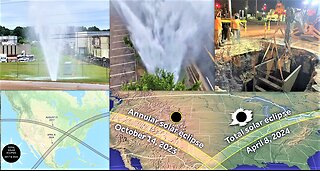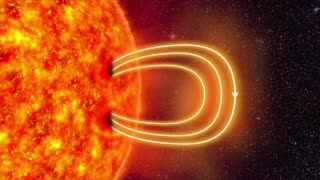How Earth's seasons change | Earth's Changing Season #shortvideo #nasa
The Earth's seasons change due to the tilt of its axis and its orbit around the Sun. Here's a brief explanation of how the seasons change:
Tilt of the Earth's Axis: The Earth's axis is tilted at an angle of about 23.5 degrees relative to its orbit around the Sun. This tilt remains fixed throughout the year. As a result, different parts of the Earth receive varying amounts of sunlight at different times of the year.
Orbit around the Sun: The Earth follows an elliptical orbit around the Sun. However, the shape of the orbit is not the primary cause of the seasons; it is mainly the tilt of the Earth's axis.
Solstices: Twice a year, during its orbit, the Earth reaches points known as solstices. The summer solstice occurs around June 21st in the Northern Hemisphere and around December 21st in the Southern Hemisphere. During the summer solstice, the hemisphere tilted toward the Sun receives the most direct sunlight, resulting in longer daylight hours and warmer temperatures.
Equinoxes: The equinoxes occur around March 21st and September 22nd. During an equinox, neither hemisphere is tilted toward or away from the Sun, and day and night are approximately equal in length. The vernal equinox marks the beginning of spring in the Northern Hemisphere, while the autumnal equinox marks the start of fall.
Seasons in the Northern and Southern Hemispheres: The seasons in the Northern and Southern Hemispheres are opposite due to their opposite tilts. When it is summer in the Northern Hemisphere, it is winter in the Southern Hemisphere, and vice versa. The transition between seasons occurs gradually over several weeks.
Overall, the changing seasons are a result of the combined effect of the Earth's axial tilt and its orbit around the Sun. These factors cause variations in the amount of sunlight received by different parts of the Earth throughout the year, leading to the different seasons.
#shortvideo
#nasa
#short
#shorts
#earth
-
 3:11
3:11
NASA Live
1 year agoAIRS NASA Advances Our Understanding of Earth’s Climate
1 -
 0:32
0:32
XYSphere
1 year agoThe earth's history and climate change
12 -
 1:12
1:12
Space Uproar
8 months agoHow Do We Know What Earth's Climate Was Like Long Ago? We Asked a NASA Scientist
16 -
 3:03
3:03
GgVv
1 year agoScience shows there's no climate change
24 -
 20:47
20:47
EEARTS
11 months agoIS THIS IT? ARE THE GREAT EARTH CHANGES UPON US? WHAT'S HAPPENING ALL OVER NORTH AMERICA?!?!?!
4391 -
 6:27
6:27
Annunaki flow
8 months agoEarth's orbit
1021 -
 4:18
4:18
JewelMeOne
10 months agoExposé - Seasons Change
19 -
 4:48
4:48
Outer Space
3 months agoSpace Weather and Earth's Aurora
1341 -
 25:07
25:07
ADAPT2030
10 months ago $0.60 earnedHottest Year on Earth Explained and What's Next
2.13K5 -
 0:10
0:10
NASA Hoax
9 months agoNASA's incredibly dumb video of the earth from the ISS
6992